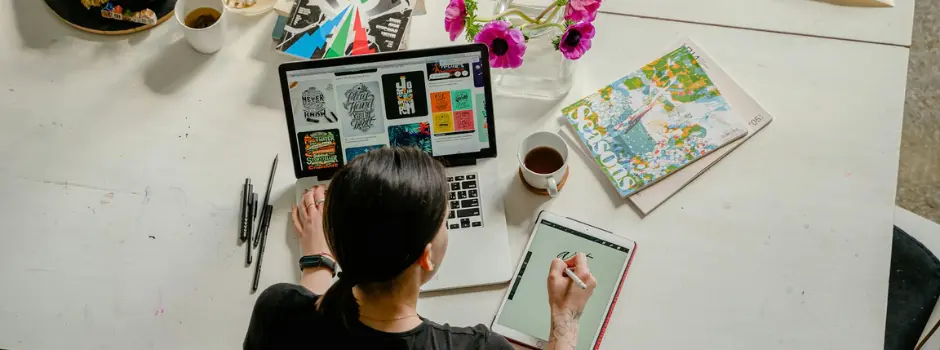
Top 50 Motion Graphics Interview Questions and Answers
Oct 24, 2024 9 Min Read 3289 Views
(Last Updated)
Stepping into a motion graphics interview can be daunting, especially when you’re unsure of what questions might be asked. To help you prepare effectively, we’ve assembled a crucial resource: our list of the top 50 Motion Graphics Interview Questions and answers.
This guide will help you boost your confidence and ensure you’re ready for any question that comes your way. From technical skills to creative insights, these Motion Graphics Interview questions and answers cover a broad range of topics that’ll help anyone aspiring to excel in the motion graphics industry.
Table of contents
- Motion Graphics Interview Questions and Answers
- Wrapping up
- Frequently asked questions
- What educational background is beneficial for a career in motion graphics?
- Can motion graphics be used effectively in print media?
- How can motion graphics be optimized for SEO?
- What future technologies could change the motion graphics industry?
- Are there any benefits of attending Motion Graphics webinars and workshops?
Motion Graphics Interview Questions and Answers
According to GlobeNewswire, the motion graphics market is expected to reach around $129 billion by 2028. The demand for motion graphics designers continues to grow as companies increasingly recognize the power of dynamic visuals in capturing viewers’ attention.
The following section of our blog provides a thorough list of interview questions and answers that will prepare you for a successful career as a motion graphics designer. Mastering these questions will not only demonstrate your proficiency but significantly boost your confidence in interviews.
1. What is Motion Graphics?
Motion graphics involves the creation of digital animations that bring text, images, and video content to life. It is often used in advertising, film, television, and online media to communicate messages dynamically and engagingly.
Also read: The Scope of Motion Graphics in 2024
2. Can you describe your workflow from start to finish when creating a motion graphics project?
My workflow begins with understanding the project requirements and audience, followed by sketching out ideas and creating storyboards. Once approved, I move on to designing assets and animating them using software like Adobe After Effects. The final step involves rendering the project and making any necessary edits based on feedback.
3. What software and tools do you prefer for motion graphics design, and why?
I primarily use Adobe After Effects because of its comprehensive tools for animation and visual effects. It integrates well with other Adobe products like Illustrator and Photoshop, which is crucial for streamlining my workflow.
4. How do you keep your motion graphics designs fresh and innovative?
I stay updated with the latest trends through online forums, tutorials, and industry blogs. Additionally, I experiment with new techniques and tools regularly, which helps bring fresh perspectives to my projects.
5. Could you walk us through a challenging project you completed and how you addressed the challenges?
On a recent project, I faced the challenge of creating an animated sequence under tight deadlines. To manage this, I simplified the design elements without compromising the impact, focused on effective project management, and collaborated closely with the team to ensure timely feedback and revisions.
Before we proceed further with our next set of motion graphics interview questions and answers, it’s essential to have a solid foundation in graphic design principles and animation basics. If you’re eager to dive deep into creating captivating motion visuals, consider joining GUVI’s Adobe Certified VFX Career Program with AI Integration. In this program, you’ll learn the fundamentals of animation, visual effects, and storytelling techniques. Gain hands-on experience with industry-standard tools and techniques, and unlock your creativity to craft stunning motion graphics for videos, presentations, and more.
Also, if you want to explore Marketing Research Techniques through a Self-paced course, try GUVI’s Marketing Research Techniques Self-Paced certification course.
6. What are the key principles of animation you consider essential in motion graphics?
Key principles include anticipation, which helps to prepare the viewer for an action, and timing, which gives the animation the right rhythm. Other important principles are easing, which makes transitions more natural, and overlap, which adds a sense of depth and realism.
7. How do you optimize your motion graphics for different platforms (e.g., mobile, web, broadcast)?
I optimize graphics by adjusting resolutions, compression settings, and aspect ratios based on the platform’s requirements. For mobile, I ensure that animations are lightweight and have faster load times.
8. What role do you think storytelling plays in motion graphics?
Storytelling is crucial as it helps to connect with the audience emotionally and make the content memorable. Effective storytelling in motion graphics involves clear narrative structures, engaging visuals, and appropriate pacing.
9. How do you incorporate feedback and revisions into your motion graphics work?
I view feedback as a crucial part of the creative process. I maintain flexibility in my projects to accommodate changes and use versioning in my files to revert if necessary. This helps in efficiently incorporating suggestions without losing previous work.
10. What are some of the biggest trends you see currently shaping the motion graphics industry?
Current trends include the use of bold, large typography, seamless transitions, and 3D elements. Additionally, there’s a growing integration of AR and VR technologies, which are opening new avenues for interactive and immersive experiences.
Also explore: Motion Graphics-Complete Roadmap
11. What are some common mistakes you see in motion graphics design, and how can they be avoided?
Common mistakes include overcomplicating animations, neglecting the principles of design, and ignoring the target audience’s needs. These can be avoided by maintaining simplicity, adhering to design fundamentals, and regularly seeking user feedback during the design process.
12. How important is audio in motion graphics, and how do you integrate it into your projects?
Audio is crucial as it enhances the visual experience and can drive the timing and pace of animations. I integrate audio early in the design process, ensuring it complements the visual elements and reinforces the overall message.
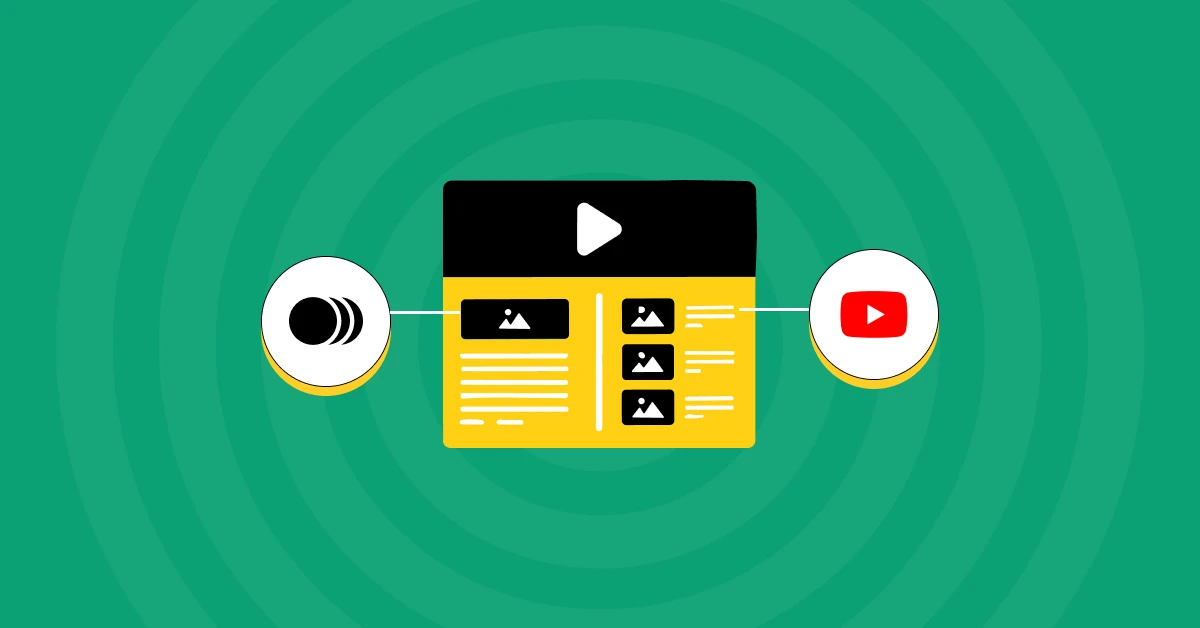
13. Can you explain the difference between motion graphics and animation?
Motion graphics specifically refer to graphic design that is in motion, often used for commercials, explainer videos, and promotional content. Animation is a broader field that includes all types of moving imagery, including traditional character animation and 3D modeling.
14. Describe a project where you utilized kinetic typography. What was the goal, and how did you achieve it?
In a promotional video project, kinetic typography was used to emphasize key messages and engage viewers. The goal was to make the text visually captivating while ensuring it was easy to read. This was achieved by synchronizing the motion of the text with the music, using dynamic transitions that reflected the tone of the content.
15. What do you think about the future of VR and AR in motion graphics?
VR and AR are transforming motion graphics by creating more immersive and interactive experiences. The future looks promising as these technologies allow designers to explore new dimensions of storytelling and user interaction, potentially expanding the industry’s reach.
Must Read: Integrating Augmented Reality (AR) into User Interfaces: Challenges and Solutions
16. How do you ensure your motion graphics are accessible to all audiences, including those with disabilities?
Ensuring accessibility involves using color contrasts effectively, providing text alternatives for spoken words, and designing animations that do not rely solely on color to convey information. Also, avoiding rapid flashes and reducing motion to accommodate those sensitive to movement is crucial.
17. What strategies do you use to manage time effectively when working on multiple motion graphics projects simultaneously?
Effective time management strategies include prioritizing tasks based on deadlines, using project management tools to track progress, and breaking projects into manageable phases. Clear communication with all stakeholders throughout the process also helps align expectations and meet deadlines.
You might be interested to read: Motion Graphics Syllabus
18. How do you handle client feedback that you disagree with during a motion graphics project?
Handling disagreeable feedback involves discussing the client’s concerns in detail, providing professional insights to guide their decisions, and finding a compromise that respects their preferences while maintaining design integrity.
19. Can you discuss a recent trend in motion graphics that has influenced your work?
One recent trend is the integration of 3D elements into flat designs, adding depth and realism to traditional 2D animations. This trend has influenced my work by allowing me to explore new creative dimensions and deliver more engaging and visually appealing motion graphics projects.
20. What metrics do you use to measure the success of a motion graphics project?
Success metrics for motion graphics projects often include audience engagement levels, such as view count, share rate, and feedback. Additionally, meeting the client’s objectives, such as increased brand awareness or message retention, plays a crucial role in measuring success.
21. How do you balance creativity with technical constraints in motion graphics design?
Balancing creativity with technical constraints involves understanding the limits of the platforms and tools at hand and devising creative solutions that work within those boundaries. Effective planning and ongoing communication with technical team members help ensure that creative ideas can be realistically implemented.
Also Explore: 8 Important Steps In The UX Design Process You Should Know
22. What is your approach to color theory in motion graphics?
My approach to color theory involves using color strategically to evoke specific emotions and highlight key messages. I ensure that the color palette complements the brand identity and enhances the overall composition while also maintaining accessibility standards.
23. How do you stay updated with the latest motion graphics software and techniques?
I stay updated by subscribing to industry newsletters, participating in professional forums, and attending workshops and conferences. Regular practice and experimentation with new tools and techniques also play a crucial role.
24. How do motion graphics and UI/UX design complement each other?
Motion graphics and UI/UX design integrate seamlessly to improve user engagement and clarify interface operations. They enrich the user interface by visually demonstrating interactions and transitions, making complex tasks more accessible and intuitive. This enhances user experience by providing clear visual cues that guide user actions and responses, ultimately making digital products more interactive and user-friendly.
25. What elements do you consider essential in creating an effective explainer video?
Essential elements of an effective explainer video include a clear and concise script, a visually appealing design that supports the narrative, engaging animations that simplify complex information, and a strong call-to-action that directs the viewer’s next steps.
26. How do you approach designing motion graphics for mobile devices specifically?
Designing for mobile devices requires optimizing animations for smaller screens and lower bandwidths. This means using simpler graphics, larger text, and shorter animations that load quickly and are easy to view, even on smaller displays.
Know About 5 Mobile Apps with the Best UI/UX Design in 2024
27. Explain how you would handle a situation where the project brief is vague or incomplete.
Handling a vague brief involves asking clarifying questions to gather as much information as possible. I would also propose initial ideas and ask for feedback to refine the direction before proceeding further, ensuring alignment with the client’s expectations.
28. What are your strategies for ensuring that motion graphics enhance rather than distract from the message?
My strategy includes using motion to guide the viewer’s attention strategically toward the most important information and ensuring that animations complement the narrative without overwhelming it. Timing and pacing are meticulously adjusted to keep the focus on the message.
29. Can you describe how you integrate static elements with dynamic animations in your designs?
Integrating static elements with dynamic animations involves ensuring that both components harmonize and support each other. Static elements often serve as anchors or breakpoints, while dynamic animations add interest and guide the viewer’s eye through the content.
30. What techniques do you use to ensure smooth transitions between different segments of a motion graphics piece?
To ensure smooth transitions, I use matching elements, such as consistent color schemes or thematic motifs, across segments. Additionally, I employ motion blur, easing, and overlay techniques to create seamless flow and continuity throughout the piece.
31. How do you incorporate branding into motion graphics without overwhelming the viewer?
To incorporate branding effectively, I use subtle yet consistent use of brand colors, logos, and typefaces throughout the animation. The key is to integrate these elements in a way that supports the overall message and design, rather than overpowering the content.
Also Read: Minimalism in UI/UX Design: Role and Importance for Design Career
32. What is the role of texture and pattern in motion graphics?
Texture and pattern add depth and interest to motion graphics. They can enhance the visual appeal and contribute to the narrative by creating an atmosphere and contextual background. It’s important to use them judiciously to maintain clarity and not distract from the main message.
33. Can you explain the concept of motion tracking and how it’s used in motion graphics?
Motion tracking involves recording the movements of objects within a video so that other elements can be added to the footage, matching the same motion. This technique is often used to integrate text or animated characters into live-action sequences, enhancing the realism of the composite.
34. Discuss the importance of typography in motion graphics.
Typography in motion graphics is crucial for conveying information clearly and adding a layer of aesthetic appeal. Good typography can guide the viewer’s attention and make the content more digestible, while poor typography can detract from the effectiveness of the message.
Learn More About Typography in User Interfaces: Basic Guide for Beginners [2024]
35. What strategies do you use to maintain consistency across a series of motion graphics videos?
To maintain consistency, I develop a comprehensive style guide at the project’s outset, detailing the color palette, typography, animation style, and other key visual elements. This guide ensures that all videos in the series are cohesive and reflect the same brand or message effectively.
36. How do you balance between innovation and adhering to the client’s brand guidelines?
Balancing innovation with brand guidelines involves finding creative ways to express the brand’s identity in fresh and unexpected ways while staying within the defined parameters. It’s about pushing the boundaries creatively but also respecting the established brand elements.
37. Describe how you use data visualization in motion graphics.
In motion graphics, data visualization is used to present complex data in an accessible and visually engaging way. By animating graphs, charts, and other statistical displays, the data becomes easier to understand and more compelling to the viewer.
Find Out Top 8 Big Data Visualization Tools That You Should Know in 2024
38. What are the challenges of integrating live-action footage with motion graphics, and how do you address them?
Integrating live-action footage with motion graphics presents challenges such as matching lighting, perspective, and motion. To address these, I use accurate motion tracking tools and composite techniques to ensure that the graphic elements align perfectly with the real-world footage.
39. Explain how you handle revisions and changes in the late stages of a motion graphics project.
Handling late-stage revisions involves flexibility and efficient project management. I keep organized project files with layers and compositions clearly labeled, allowing for quick updates. Communication is also key to managing expectations and ensuring that changes can be made swiftly without compromising the project timeline.
40. What role does sound design play in your motion graphics work?
Sound design is integral to motion graphics as it enhances the visual elements and can drive the narrative. It adds an additional layer of depth, making animations more immersive and emotionally resonant. I collaborate closely with sound designers to synchronize audio cues with visual movements to maximize impact.
41. How do you ensure that motion graphics remain engaging throughout the duration of the video?
To keep motion graphics engaging, I focus on pacing and variety. This involves alternating between different types of animations and visuals, maintaining a rhythm that holds the viewer’s attention, and strategically placing key information and visual breaks to keep engagement high.
You can explore: Best YouTube Channels to Learn Motion Graphics
42. What is your approach to creating looping animations for social media?

For looping animations, the key is to create a seamless end and start point so that the loop feels natural. I ensure that the final frame transitions smoothly into the first frame, often using recurring themes or elements that make the loop appear endless.
43. How do you incorporate user interaction into motion graphics for web and mobile apps?
Incorporating user interaction involves creating elements that respond to user actions, such as clicks or swipes. I use responsive design principles to ensure that animations are engaging and functional across different devices, enhancing the user experience without causing delays or usability issues.
44. Can you discuss how scalability impacts the design of motion graphics?
Scalability is crucial in motion graphics to ensure that animations perform well on various platforms and devices. I design with flexibility in mind, using vector-based graphics when possible and ensuring that animations scale without loss of quality or performance issues.
45. What are your techniques for creating realistic motion effects in animations?
Creating realistic motion effects involves using principles such as inertia, momentum, and easing. I often reference real-world physics to guide my animations, ensuring that movements are lifelike and believable. Software features like motion blur and particle systems are also utilized to enhance realism.
Also Read: From Pixels to Problems: 15+ Notable Challenges in the Graphic Design Industry
46. How do you manage file sizes and compression without losing the quality of motion graphics?
Managing file sizes involves optimizing animations and choosing the right codecs for compression. I balance quality and performance by reducing unnecessary elements, simplifying animations where possible, and using software settings that compress files efficiently while maintaining high visual fidelity.
47. What considerations do you take into account when creating motion graphics for international audiences?
For international audiences, cultural sensitivity and language variations are key considerations. I ensure that visuals and narratives are universally understandable and avoid region-specific references unless specifically targeted. Additionally, accommodating multiple languages and cultural norms is crucial.
48. How do you evaluate the effectiveness of a motion graphics campaign?
The effectiveness of a motion graphics campaign is evaluated through metrics such as viewer engagement, conversion rates, and feedback. Analyzing how the animation performs in terms of reaching its intended goals allows for adjustments and better targeting in future projects.
49. What role does contrast play in motion graphics, and how do you effectively use it?
Contrast is essential in motion graphics for drawing attention and guiding the viewer’s eye. I use contrast in color, size, and motion to highlight important elements and create a visual hierarchy that makes the content easy to follow and engaging.
50. Discuss how you ensure continuity when working with a team on a large motion graphics project.
Ensuring continuity in team projects involves clear communication, standardized guidelines, and regular reviews. I use collaborative tools and shared asset libraries to keep everyone aligned on the visual style and narrative, ensuring consistent output across all parts of the project.
Enroll in GUVI’s Adobe Certified VFX Career Program with AI Integration to get your career off to a great start. Here, you will work on amazing real-world projects while learning how to use Adobe Illustrator, Photoshop, After Effects, and Premiere Pro. Moreover, through our mock sessions, our mentors will guide you through the most relevant motion graphics interview questions and answers one must know to ace any interview.
Alternatively, if you want to explore Marketing Research Techniques through a Self-paced course, try GUVI’s Marketing Research Techniques Self-Paced certification course.
Wrapping up
We hope that through our comprehensive guide to Motion Graphics Interview Questions and Answers, you’ll gain the knowledge and insights needed to excel in your next interview. By familiarizing yourself with these questions, you can approach your interview with confidence, ready to showcase your motion graphics skills and creativity in the field.
Use this resource to refine your responses, understand industry expectations, and stand out as a well-prepared candidate. If you’re new to the field or even a seasoned professional, mastering these questions will help you find success in the captivating world of motion graphics.
Read about: Product-based Companies for Motion Graphics Designers
Frequently asked questions
What educational background is beneficial for a career in motion graphics?
A background in graphic design, animation, or a related field is beneficial. Courses or degrees that focus on visual arts, computer graphics, and multimedia production provide a solid foundation.
Can motion graphics be used effectively in print media?
While traditionally designed for digital platforms, motion graphics principles can inspire dynamic designs in print media through the use of illusionary motion and depth, enhancing visual impact.
How can motion graphics be optimized for SEO?
Including text overlays, subtitles, and meta descriptions with relevant keywords can help optimize motion graphics for SEO, making them more discoverable in search engines.
What future technologies could change the motion graphics industry?
Emerging technologies like artificial intelligence and machine learning are poised to streamline the production process, enhance personalization, and create more immersive experiences through augmented and virtual reality.
Are there any benefits of attending Motion Graphics webinars and workshops?
Attending motion graphics webinars and workshops enhances your skill set by exposing you to the latest industry trends, tools, and techniques. These events also offer valuable networking opportunities with professionals and experts, providing insights and feedback that can significantly advance your career in motion graphics.

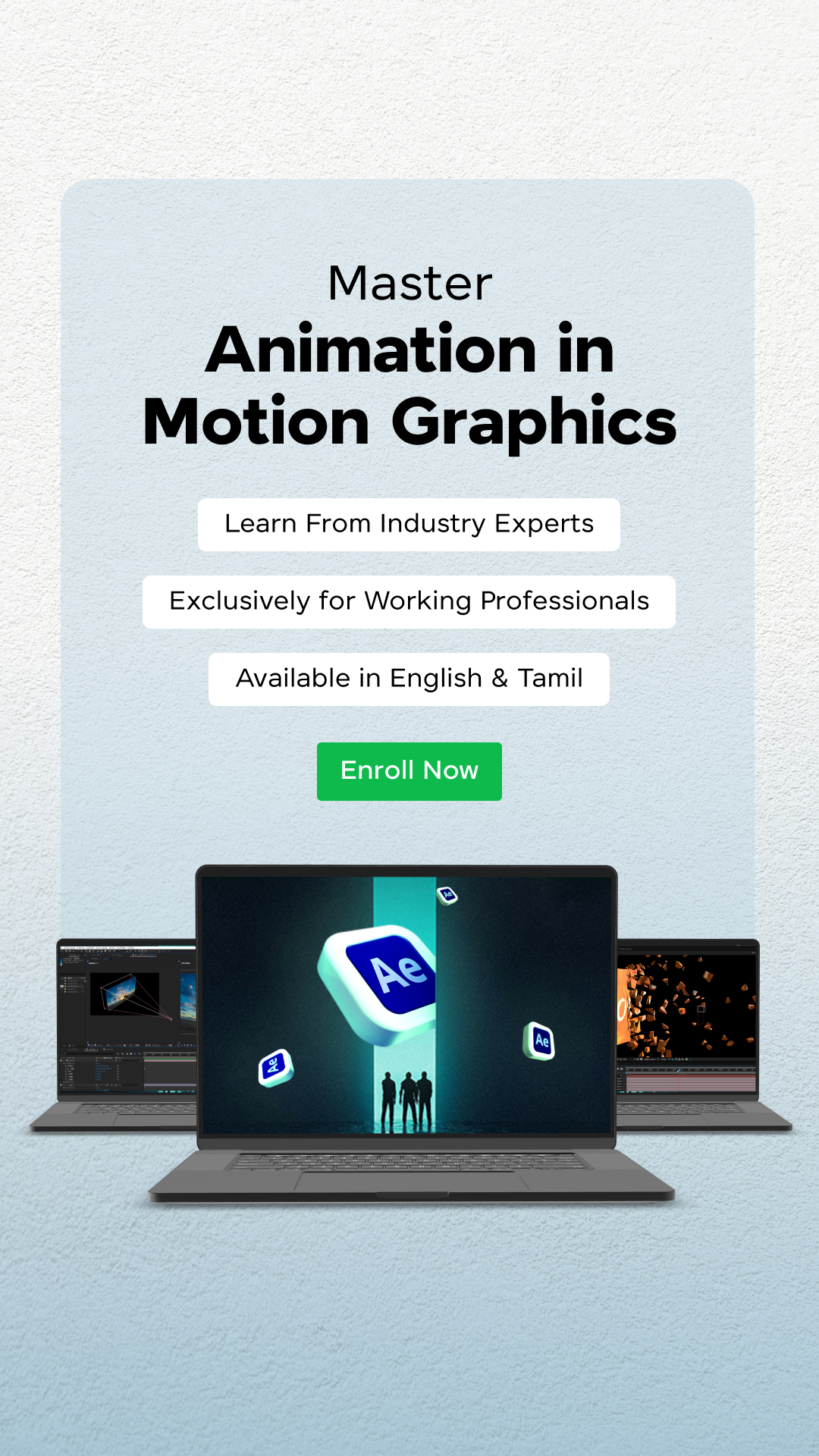

























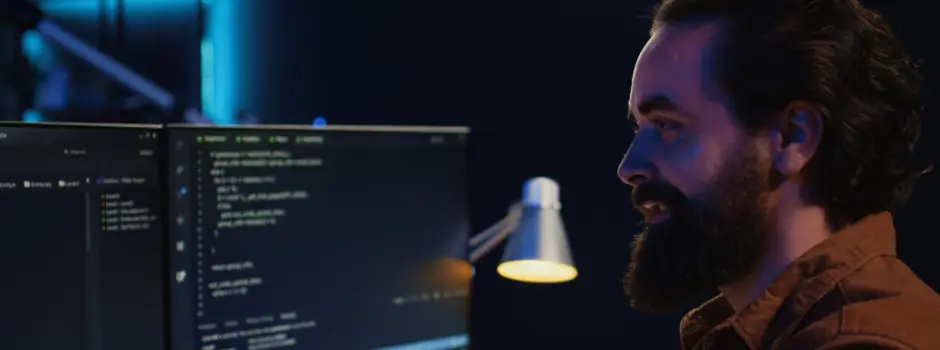



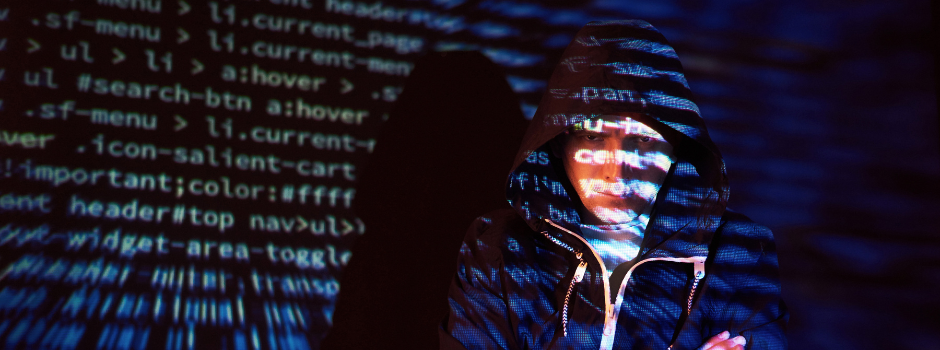
Did you enjoy this article?